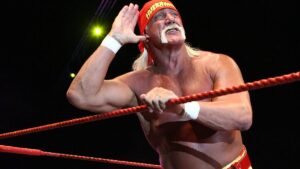The Shape of Lithium to Come: Ken Brinsden bangs the drum about the next 10 years of lithium

Lithium's going to be hard to beat, says Ken "The Bongo" Brinsden.
- Former Pilbara Minerals MD Ken Brinsden says lithium prices have reached a new floor.
- Looking ahead, pricing will be strong, big players will move in, as spodumene phases out.
- China is still a massive lithium market, but North America’s EV supply chain is growing.
Like H.G. Wells, Ornette Coleman and The Refused, Ken Brinsden is known as a visionary in his field.
The former Pilbara Minerals (ASX:PLS) managing director became the public voice and face of the lithium boom in 2021 and 2022 as surging electric vehicle sales and a push for green energy turned the metal into the most exciting commodity anywhere globally.
After steering Pilbara through the development of the Pilgangoora lithium mine and its recovery from lithium’s nuclear winter of 2019-2020, when oversupply and low prices threatened to send just about every lithium miner to the wall, the major Pilbara producer used record prices in China to become not only a $15 billion market giant, but also a household name as the most regularly traded stock on the ASX.
His retirement didn’t last long and his Midas Touch didn’t lose its power.
As non-exec chair of TSX and ASX listed Patriot Battery Metals (ASX:PMT), he has overseen a board that has made the largest hard rock lithium discovery in Canada.
The C$2b explorer’s Corvette pegmatite in Quebec’s hotter than hot James Bay region is now known as the 8th largest hard rock spodumene asset globally at 109Mt at 1.42% Li2O.
It was enough to draw US lithium and chemical giant Albemarle to tip in C$109m ($123m), a buckaroo for every tonne, for a strategic 4.9% stake that could lead to the construction of a North American lithium refinery down the line.
Untethered from the conservative strictures of acting MDs, Brinsden is free to let loose on his intimate thoughts, premonitions and forecasts on where the lithium and EV industries will go over the next 10 years.
In the spirit of Ornette’s Shape of Jazz to Come (and a little H.G. and The Refused), here are some of his hottest takes.

Lithium prices are at a new floor
Lithium prices have pulled back in China as of late, but in the mid-US$30,000/t range for lithium hydroxide and carbonate, are a multitude higher than their lows a little over three years ago.
Brinsden says the desperation to secure tonnes by converters has inspired high cost operations to proliferate.
Similar to iron ore, Brinsden’s training ground at the helm of Atlas Iron, it means the cost curve will never be what it once was.
“The floor price [has been reached] in the sense that it’s materially stepped up from historical norms because the industry has gone through a pretty significant change in the last two or three years to support demand especially from China,” he said.
“Some really unusual products have come to market that are very, very expensive. Think of it this way… Is it realistic that the iron ore market would be just Yandi mine delivering to China at $27 a tonne? Of course not.
“To support demand into China, a whole heap of other stuff has come to market that’s nothing like $27 a tonne. So the iron ore price really struggles to fall below US$100/t.
“Well exactly the same phenomenon is underway in the lithium world. It’s no longer an industry with just Greenbushes or the Atacama. It’s everything else that’s come into the market to support demand at nothing like those costs of historical industry in the lithium world when it was a bit more boutique.
“And as a result pricing is going to be strong. That’s my personal view. And would I worry about US$35,000 a tonne? Absolutely not.”
The big boys will have to get into lithium
So far only Rio Tinto (ASX:RIO) has moved into lithium in any substantial way, but even it sees the prospect of buying assets a nervous business with the post-boom valuations of lithium producers, developers and explorers.
BHP (ASX:BHP), Glencore, Teck and more like old world commodities like nickel and copper to play the energy transition.
Brinsden says they’ve missed the boat, but sees the giants coming eventually into the fold.
“The big guys haven’t acted. Yet. Not materially.
“So the critical minerals sphere has been the domain of the juniors and the mid-tiers and it’s been hard. But so far, now, a happy hunting ground. The big guys must be looking at what’s happening in the industry today and go oh geez we missed it, it’s a shame.
“But they will participate, it’s just a matter of time. And they’ll be compelled to because eventually their shareholders will say hang on, how did you guys miss this? Pilbara is making 800 million bucks a quarter. Your mines don’t make that. What are you gonna do about it?
“You can imagine those sorts of conversations unfolding. They’ve missed a trick. They’ve missed the significance of the scale in the industry.
“And I might say, eventually, their employees will be demanding change from the inside of their businesses. Imagine how hard it is for a coal company to recruit a young professional now. Well, I don’t want to say that iron ore is quite there yet but could it be in 5-7 years’ time? Absolutely.”
In 10 years, Aussie spodumene could be a thing of the past
Aussie companies are the biggest lithium producers in the world. Their hard rock mines make up over 50% of the market, far outstripping supply from brines in South America, small hard rock assets in Canada or lepidolite in China and Africa.
Margin is currently on the side of the spodumene producers given the supply of the rocks is far tighter than chemical conversion capacity in China.
But Brinsden, who calls spodumene with its 6% and below lithium oxide purity an inefficient way of shipping lithium to customers overseas, thinks the midstream products currently being studied by incumbents Pilbara Minerals and Mineral Resources (ASX:MIN) could be the way of the future for Australian producers.
“The only reason spodumene is in the market today is it’s a quirk of history. There was a by-product concentrate stream coming from the Greenbushes mine that had nowhere to go because there was no chemical conversion capacity in Australia, obviously.
“So it went to China and then eventually sufficient volume was coming that it inspired the chemical conversion market in China.
“So a new market developed but the only reason it was there was because originally it was a byproduct. It is an incredibly inefficient carrier of lithium. Actually it’s horrible. You don’t want to ship spodumene and I think the market’s waking up to that.
“Pilbara is pioneering a path to a much improved product that will establish a global footprint well beyond spodumene and I honestly believe that’s actually what’s going to happen because there’s so much logic and the logic is really compelling.
“Lower carbon footprint, minimises the waste in the destination market, means you can bypass China and land your product in Europe or North America in a really competitive way. So I’m firmly of the view that’s the direction that the market is going to go.
“Lastly, economically, it’s unbelievably compelling for the miners, because the miners start to compete with revenue from a chemical perspective as compared to just being a miner. And the credit is like 10 or 20 times the revenue that you would otherwise generate with spodumene.
“So it’s really important for the industry and actually, I’d argue it’s important for WA, that is exactly what should happen. And I think it’s going to happen faster than people are currently giving it credit for. So I don’t think spodumene is going to be in the market in about 10 years’ time.”
Brinsden compares the midstream product being pioneered by Pilbara in its $105m JV with Calix (ASX:CXL) to mineral sands, a long established industry in Australia.
If you want to by-pass China you have to get into the chemical market overseas
Much has been made of diversifying away from China this week, and much has been made of who the prime suitor for Patriot and its Corvette discovery would be.
After weeks of rumours around MinRes and Pilbara, Albemarle emerged as the strategic backer.
Brinsden says if all you have is spodumene, you’re currently bound to the Chinese market. If you want to supply the new supply chain in the US and Europe, you’ll need partners who can deliver chemical conversion capacity in new markets.
Unlike the Australian producers, Albemarle already has that skill set, building the 50,000tpa Kemerton plant in WA for upwards of US$1.5b with a doubling of the South West chemical factory already sanctioned.
That makes them highly competitive when it comes to M & A with juniors looking to move into the North American battery supply chain.
“Plenty more chemical capacity will be built in China, in which case chemical conversion might very well be a marginal business. So then you argue, well, why would you participate and that’s when it starts to get into the realms of what you’re inquiring about.
“The only way you can bypass China is if you have built chemical capacity elsewhere, either here in Australia or somewhere else around the world.
“Pilbara minerals is going to South Korea, for example. Otherwise, the spodumene is going into China. So if you want diversity in your business, if you want an alternative to China, you have to get into the chemical business in some way, shape or form.”
Brinsden reckons it will be far quicker to develop mines in Canada, where approval and environmental uncertainties persist, than many in the market believe, telling delegates it would not take a decade for Corvette to be built.
A conversion plant could support as much as 400,000tpa, with Brinsden suggesting Corvette had the potential to be more prolific than that.
“We’ve allocated 400,000 tonnes of spodumene concentrate and that translates to 50,000 lithium carbonate equivalent tonnes, which represents the same capacity they’ve actually already built in Kemerton,” he said.
“Now they are about to subsequently expand that capacity, but 50,000t has basically been built there today and it’s in the process of coming to life.
“That’s a significant facility in the industry now. So historically, you would have said, they’d probably never get that big, but they have and that’s because the industry is now starting to scale up.
“So we think allocating them 400,000t for the purpose of underwriting that first. 50,000t of capacity is a really healthy start for them. I guess it’s a healthy start for us, albeit we expect ultimately to produce a lot more spodumene concentrate than that.”
You can’t forget China, but ‘a lot of EVs’ will be sold in North America
While China remains the largest part of the EV market and supply chain, it will be a global industry.
Brinsden says Patriot plans to be a player in the establishment of the North American supply chain.
“Having done a lot of business in China, I would suggest that still it’s a good market. It’s the world’s largest lithium raw materials market. So I don’t think you can completely ignore it.
“The point I was making in respect to Patriot is we don’t have to participate there because we’re not ready to ship spodumene concentrate today. But our expectation is that there will be another supply chain in North America.
“And in fact, we can be a part of establishing that, so you don’t have to participate in China. Why do you want to go to North America?
“Well, it is going to be another huge market in much the same way that China has become today. It’s the world’s next biggest car market.
“So a lot of EVs are going to be sold, so they need the rest of the supply chain and as such, we should look to create that and and hopefully create some value for our shareholders along the way.”
Patriot Battery Metals (ASX:PMT) share price today:

UNLOCK INSIGHTS
Discover the untold stories of emerging ASX stocks.
Daily news and expert analysis, it's free to subscribe.
By proceeding, you confirm you understand that we handle personal information in accordance with our Privacy Policy.








